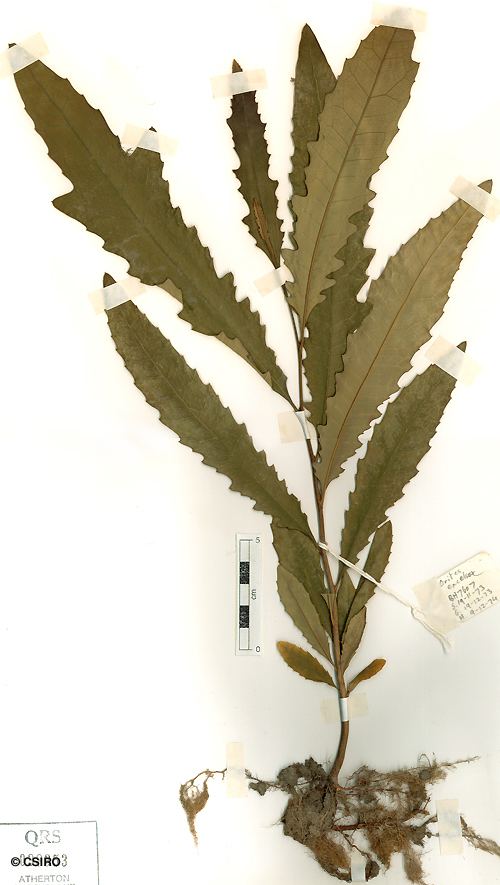Kingdom Plantae Family Proteaceae Scientific name Orites excelsus | Order Proteales Genus Orites Rank Species | |
 | ||
Similar Orites, Sloanea woollsii, Doryphora sassafras, Dysoxylum fraserianum, Cryptocarya foveolata | ||
Orites excelsus is a rainforest tree of northern New South Wales and southeast Queensland. Known colloquially as the prickly ash, mountain silky oak or white beefwood, it is a member of the genus Orites within the family Proteaceae.
Orites excelsus grows to 30 m (100 ft) high with grey-brown bark. The juvenile leaves are lobed (pinnatisect), while adult leaves are simple – lanceolate, ovate or oblong, and are 4–18.5 cm (1.6–7.4 in) long by 1.5–4.5 cm (0.6–1.8 in) wide. New growth is covered in rusty hairs, but the leaves become smooth, glossy green above and grey or white below. Appearing in winter and spring, the inflorescences are axillary and measure 5 to 11 cm in length, and are composed of white fragrant flowers.
The botanist Robert Brown described Orites excelsa in 1830, after it was collected by Charles Fraser near the Hastings River in 1818. Common names include mountain silky oak, southern silky oak, prickly ash, and white beefwood. The species name has been revised from excelsa to excelsus. Frederick Manson Bailey described Orites fragrans from Mounts Bellenden-Ker and Bartle Frere which turned out to be this species. Fossils of lobed leaves closely resembling juvenile leaves of O. excelsus have been recovered from the early to middle Eocene Taratu Formation near Livingstone in northern Otago, New Zealand. They have been provisionally classified as close to this species, though a resemblance to Athertonia diversifolia has been noted.
Orites excelsus is found in cool mountain rainforests from Barrington Tops north to the Queensland border in New South Wales, and from Mounts Bellenden-Ker and Bartle Frere in north Queensland. It is associated with yellow carabeen (Sloanea woollsii). The species is found at altitudes of 750 m and higher in New South Wales, and at 1500 m and higher in north Queensland.
